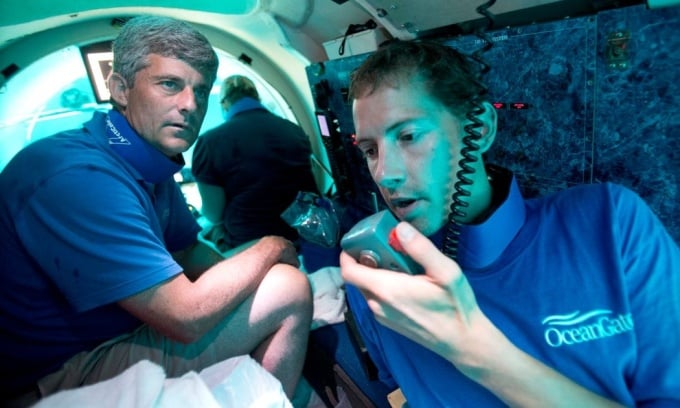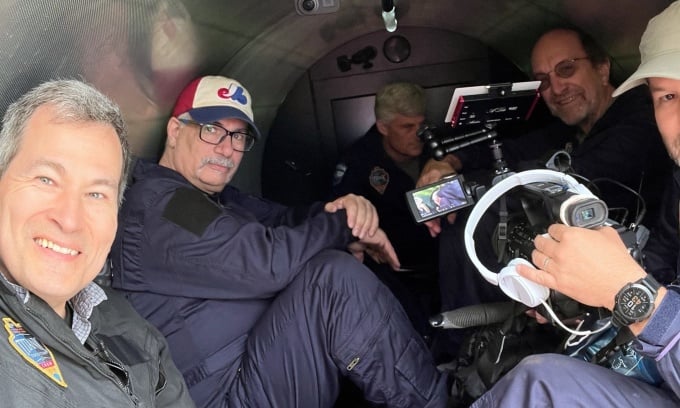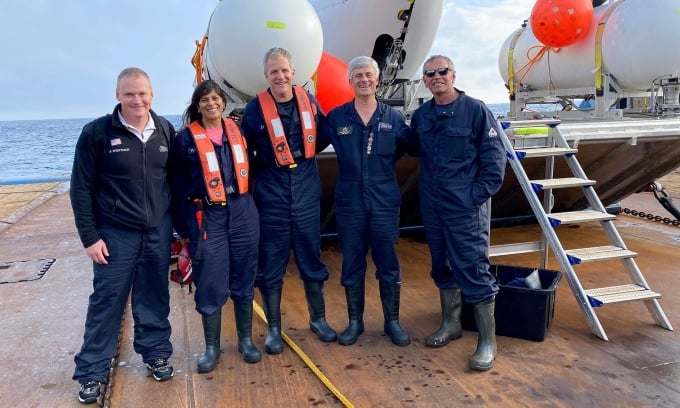Those who have explored the ocean floor on the Titan submersible say it is a stressful but unique experience, worth risking your life for.
Before boarding the Titan submersible for the $250,000 Titanic tour, each passenger must sign a liability waiver with OceanGate, the company providing the service, in which the risk of death is mentioned at least three times on the first page. Accordingly, they will be responsible for their own death if the ship encounters an accident at the bottom of the sea.
“This activity will take place inside an experimental submersible that has not been approved or certified by any regulatory agency,” the waiver reads. “Movement in and around the vehicle could result in physical injury, disability, mental trauma, or death.”
As they dove deeper into the ocean, the light faded. In the pitch-black water, they could only see bioluminescent creatures through a small window. The bitter cold gradually spread.
Mike Reiss, a passenger on the trip last summer, brought a pen and paper to record his experiences during his dive on the Titan. Reiss said that if the ship broke down, he would write jokes from the ocean floor as "one last gift to the world ."

Stockton Rush (left), owner of OceanGate, during a dive off the coast of Florida in 2013. Photo: AP
Joseph Wortman, 53, who went on the Titan expedition in 2021, described the trip as a "really nerve-wracking" and unforgettable experience.
"If something goes wrong, there's no one out there to help you. You can't call 911. You're on your own," said Wortman, CEO of a fireplace company in Detroit.
On June 18, the OceanGate submersible Titan went missing while carrying five people on a tour of the Titanic wreck at the bottom of the Atlantic Ocean, about 600 km from Newfoundland, Canada. US and Canadian authorities have deployed a series of planes, ships and equipment to search and rescue the Titan.
Rescuers have been hearing loud noises in the area every 30 minutes, raising hopes for the rescue effort. However, they have so far found no trace of Titan.
Those who have taken similar journeys say the risks of the trip are obvious, but the thrill and excitement of reaching the ocean depths makes the expedition appealing and worth risking their lives.
They call the experience scary and nerve-wracking, but incredibly exciting and certainly unique. According to the website of the Washington-based company OceanGate, clients are taught how to dive before the trip, but the training only lasts a few hours.
Wortman said the submersible would be slowly lowered to the ocean floor over several hours. Meanwhile, the crew would pass the time by listening to music and looking out the windows at the sea creatures. He also took part in the communication, exchanging information between the submersible and the support team on the surface.
Their submersible successfully reached the Titanic wreck and got close to the stern. Wortman said he was excited to be one of the few people in the world to see the shipwreck up close, even though the journey to it was truly harrowing.
One of the first things he did when he surfaced was call his family to tell them he had returned safely.

CBS reporter David Pogue (left) on the Titan last year. Photo: WSJ
Reiss, 63, went on another Titan expedition last July. The Simpsons writer said the risk of death is always a concern. Reiss said he has been to 134 countries and has no children. In the worst case, he can console himself with the knowledge that he has lived a life well lived.
Reiss describes the Titan as being about the size of a pickup truck with no seats, but he never felt claustrophobic. To make the ship nose down, all the passengers would gather at the front. To make it rise, they would gather at the back. “It sounds weird, but it’s actually very simple and basic,” he says.
Finally, after several hours, the Titan stopped more than 450 meters from the Titanic wreck. The compass on the ship did not work, so they had to grope their way in the dark for more than 90 minutes to find the Titanic and only had about 20-30 minutes to explore .
Colin Taylor, 60, joined the OceanGate expedition with his son, also in July 2022. The retired fund manager said he received a safety briefing for several hours on the day of the Titan's launch.
“The deeper we went, the more bizarre the creatures became,” he recalled, calling it an “alien world.”
Taylor said the trip was unlike anything he had experienced before. "It was an incredible journey, from an intellectual to a scientific point of view, from an engineering point of view to an adventure point of view," he stressed.
"You sit on the floor with your back against the curved wall. There's no heating or air conditioning. It's hot near the surface, but the deeper you go, the cooler it gets," said CBS reporter David Pogue, recalling his trip last year.

Joseph Wortman (left) and the rest of his diving team after returning from the Titan expedition in 2021. Photo: WSJ
Pogue’s trip was canceled after the submersible had only reached about 36 feet (11 meters) due to a technical problem with the launch pad. He signed a liability waiver before boarding because he felt comfortable with OceanGate’s safety record.
“They literally listed eight ways you could be killed or permanently disabled,” he said, adding that before the disappearance, OceanGate had never had any passengers injured.
“That’s normal in this industry,” he said. “This is the North Atlantic and that risk is part of the deal you sign.”
Vu Hoang (According to WSJ )
Source link






































































































Comment (0)